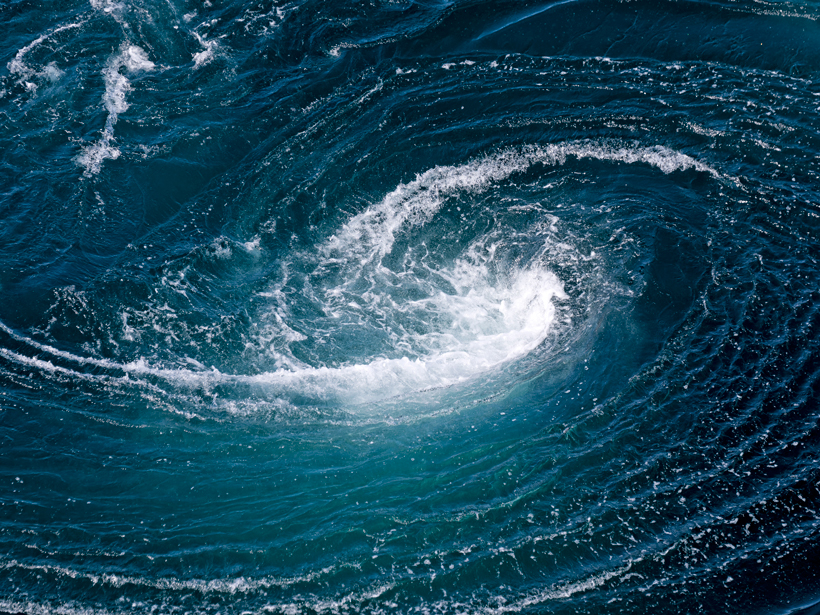Source: Geophysical Research Letters
Spanning tens to hundreds of kilometers, mesoscale eddies spiral and swirl across the ocean, transporting just as much water as wind or deeper currents. Although scientists have long studied them from above by satellite, their 3-D motion is more difficult to track as they move over the seafloor and encounter undersea mountains and ravines.
To observe these hidden dynamics, scientists deploy buoyant bobbers called Argo floats, which trail sensors at different depths. Now, by dropping 17 Argo floats into a clockwise eddy east of Japan, Xu et al. have captured what happens when such an eddy hits the Izu-Ogasawara Ridge, a stretch of undersea mountains roughly north of the Marianas Trench.
The authors dropped the floats in the southwest moving eddy in March 2014. Several of the floats remained caught in the eddy for months, until the vortex reached the Izu-Ogasawara Ridge in late September and finally dissipated. Several other floats escaped the first eddy and got trapped in a second one, farther east. When this eddy encountered the ridge, it passed over it, and the floats became entrained in the current for nearly a year, until the current diminished in May 2015.
In total, the team collected more than 5000 data points on the two eddies, monitoring their structure and movement down to more than 1000 meters deep. As both eddies hit the ridge, they “domed up,” increasing in diameter, the team reports.
The eddies formed underwater structures known as Taylor columns, a phenomenon in fluid dynamics that occurs when rotating fluids encounter an obstacle and form a column of stagnant water above it. Despite all the turbulence happening deep underwater, the upper 200 meters of ocean remained largely unperturbed as the eddies hit the ridge, the team found.
The authors note that studying the dynamics of such eddies could help scientists better predict how they distribute heat, salt, and carbon throughout the globe. (Geophysical Research Letters, https://doi.org/10.1002/2016GL072163, 2017)
—Emily Underwood, Freelance Writer
Citation:
Underwood, E. (2017), What happens when ocean eddies hit a wall?, Eos, 98, https://doi.org/10.1029/2017EO072093. Published on 24 April 2017.
Text © 2017. The authors. CC BY-NC-ND 3.0
Except where otherwise noted, images are subject to copyright. Any reuse without express permission from the copyright owner is prohibited.

